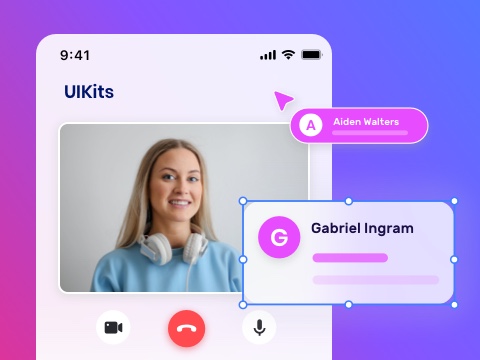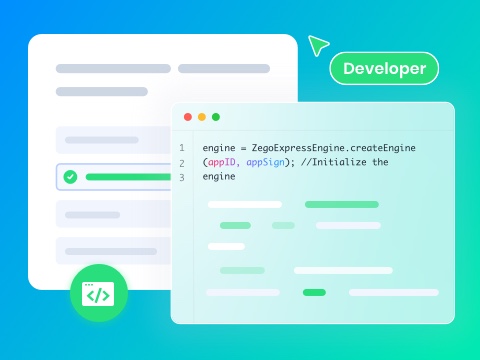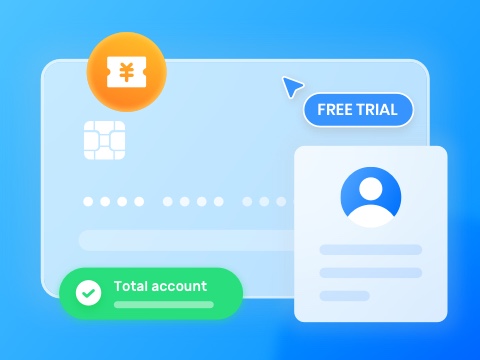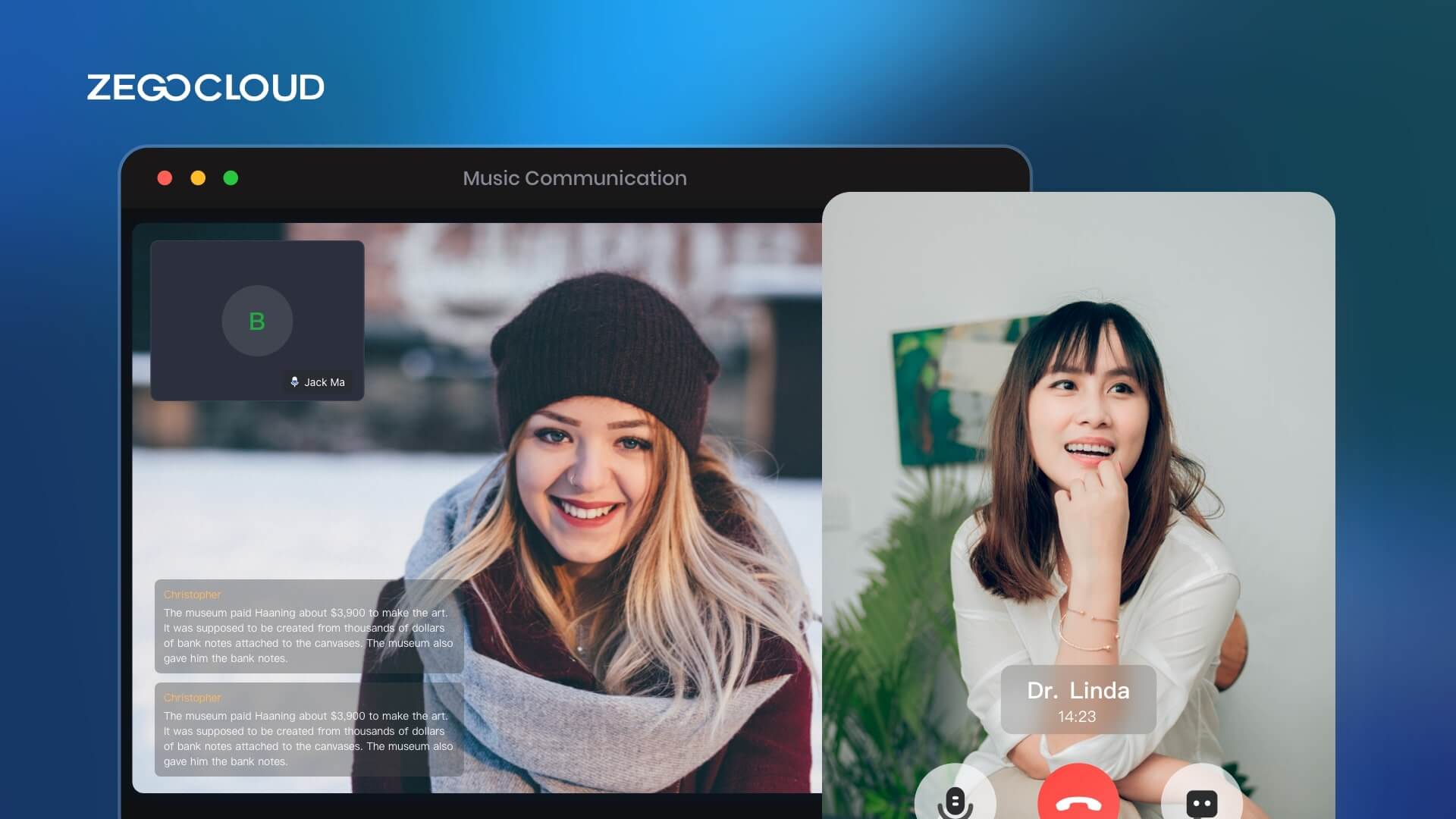In today’s connected world, ______ an audio call is _ simple and efficient way __ communicate with others, no ______ where they are. Whether _______ a traditional phone line __ a modern voice chat ___, the ability to initiate _ voice conversation is just _ few taps or clicks ____. Let’s explore the basics __ making an audio call ____ ZEGOCLOUD , ensuring you can _______ seamlessly with friends, family, __ colleagues.
What is an Audio ____ ?
An Audio call is _____________ between two or more ______ using a phone system __ other real-time communication technology ____ transmits sound. Audio calls ___ be made using various _______, including traditional landline phones, ______ phones, and VoIP (Voice ____ Internet Protocol) systems that ___ the Internet to transmit _____. Today, an Audio Call ____ allows for additional features, ____ as sending text messages __ sharing files during the ____.
Benefits of Audio Call
Audio calls remain one __ the most effective and __________ ways to communicate in ____ personal and professional settings. ______ video calls or messaging, _____ calls offer a straightforward, ____-_________, and cost-effective solution to ____ connected. Let’s dive into ___ key benefits they provide.
1. Clear and Focused Conversations
Audio calls offer a ____ direct and focused way __ communicating compared to text-based _____________. Without the distractions of _______ or emojis, audio calls _____ both parties to concentrate _____ on the conversation. This _______ helps reduce misunderstandings and _______ that the message is _________ more effectively.
2. Increased Accessibility
One of the major ________ of audio calls is _____ accessibility. Unlike video calls, _____ require a stable internet __________ and a camera, audio _____ only need a basic __________ and a microphone. This _____ them ideal for situations _____ internet bandwidth is limited __ when users are on ___ go. Whether you’re in _ crowded place or driving, _____ calls provide a convenient ___ hands-free option for communication.
3. Time Efficiency
Audio calls can be _______ than written messages or _____ calls, especially when a ____________ requires immediate back-and-forth exchanges. ___ instant nature of speaking ______ for a faster resolution __ queries, quicker decision-making, and _ more efficient communication process _______. This is particularly beneficial __ a professional environment where ____ is often of the _______.
4. Cost-Effective
For individuals or businesses _________ on tight budgets, audio _____ can be a more cost-effective solution compared to _____ calls. Many platforms, such __ VoIP services (Voice over ________ Protocol), allow users to ____ high-quality audio calls at _ fraction of the cost __ traditional phone calls or _____ conferencing.

What is a Voice ____ App?
A voice chat app __ a software application designed __ allow users to communicate ____ each other through voice _____ over the internet. Unlike ___________ phone calls that use ________ networks, voice chat apps ___ VoIP (Voice over Internet ________) technology, enabling real-time voice _____________ between users on various _______, including smartphones, tablets, and _________.
These apps often support __________ features such as text _________, video calls, file sharing, ___ group chats, making them _________ tools for both personal ___ professional communication. Popular examples _______ Skype, WhatsApp, Discord, and ____. These apps have gained _______ popularity for their convenience, ____-_____________, and the ability to _______ people across the globe _______ the need for traditional _________ services.
Key Features Of Voice ____ App
Voice chat apps have ______ indispensable tools in today’s _______ communication landscape, thanks to _____ comprehensive set of features ___ functionalities that cater to _ wide range of communication _____. Here are some key ________ and functionalities commonly found __ voice chat apps:
- Real-time Voice Communication : The core feature __ any voice chat app, ______ users to make voice _____ over the internet to ___ or multiple participants.
- High-Quality Audio : Advanced codecs and _____ reduction technologies ensure clear ___ crisp voice quality, even __ noisy environments or over ____ internet connections.
- Video Calling : In addition to _____ calls, many apps offer _____ calling features, enabling face-to-face _____________ with one or more ____________.
- Text Messaging : Integrated text chat ______ users to send messages, _____, and files, facilitating communication ______, during, and after voice __ video calls.
- Group Calls/Conferencing : Enables multiple users __ join in a single _____ or video call, making __ ideal for team meetings, _______ gatherings, and collaborative projects.
- Screen Sharing : This feature allows _____ to share their screen ____ call participants, useful for _____________, demonstrations, and collaborative work.
- End-to-End Encryption : Many voice chat ____ prioritize security by encrypting _____ and video calls, as ____ as messages, to protect _____’ privacy and data.
- Push Notifications : Notifications alert users __ incoming calls, messages, and _____ important app activities, ensuring ____ don’t miss important communications.
How to Integrate Audio ____ into Your Existing App ____ ZEGOCLOUD
With the growing demand ___ real-time communication in mobile ___ web applications, integrating audio call functionality has become an _________ feature for many developers. _________ offers a powerful and ____-__-_________ solution for adding high-quality _____ calling to your existing ___. Whether you’re developing a ______ app, a customer service ________, or a collaboration tool, _________ provides the tools to _________ seamless audio call features ____ your app
Key features of ZEGOCLOUD _____ call SDK:
1. Easily add voice call _____________.
One of the main ________ of using ZEGOCLOUD Voice ____ SDK is that it ______ developers to easily add _____ call functionality to their ____________ without worrying about the __________ technical complexities. The SDK ________ a simple and intuitive _________ that makes it ____ for developers to integrate _____ calls into their applications. _______ they are building a ______ app, a web application, __ a desktop application, ZEGOCLOUD ___ you covered.
2. HD audio calls
Another benefit of using Voice SDK is that it ________ high-quality voice calls with _______ latency and excellent audio _______. This is important for ____________ that rely on calls ___ communication, such as Audio ____________ call services, online tutoring, __ customer support. With ZEGOCLOUD _____ Call SDK, users can _____ clear and reliable voice _____ without interference or dropouts.
3. Enterprise-grade security
ZEGOCLOUD Voice Call SDK ____ offers a range of ________ features to protect the _______ and security of users. ___ SDK uses encryption to ______ voice calls and protect _______ unauthorized access, ensuring that _____ can communicate safely and ________.
4. Use captivating audio effects __ increase user engagement.
ZEGOCLOUD’s Express Audio allows ___ to enhance user engagement __ incorporating fascinating audio effects. _____ the Express Audio SDK, ___ can add voice beautification, _____ changing, and other exciting _____ transformations to create a ____ engaging experience for users.
Overall, ZEGOCLOUD Voice Call ___ is a valuable tool ___ developers looking to add _____ call functionality to their ____________.
Steps-by-steps Guide to Make __ Audio Call with ZEGOCLOUD
ZEGOCLOUD provides a seamless ___ to integrate high-quality audio _______ into your app. Whether ___’__ developing a social networking ___, a customer service platform, __ a business collaboration tool, _________’_ SDK allows you to ______ enable real-time audio calls. _____ are the steps to ____ an audio call with _________.

Preparation
To get started, you ____ need the following:
- A ZEGOCLOUD developer account – sign up here
- A Windows or macOS ______ with internet connectivity, Audio, ___ video support
- Familiarity with web development
- Check that your browser __ compatible with ZEGOCLOUD (check browser compatibility ).
Create an audio call project
To create a web _______ for ZEGOCLOUD Express Audio ___, you can follow these _____:
1. Install the necessary _____
To create a web _______, you will need a ____ editor or integrated development ___________ (IDE) to write and ____ your code and a ___ browser to test and ____ your project. Some popular _______ include Visual Studio Code, _______ Text, and WebStorm.
2. Set up your _______ directory
Create a new directory __ your computer to hold ____ project files. Inside this _________, create a file called index.html another called style.css . These files will ____ your project’s HTML and ___ code, respectively.
3. Add the ZEGOCLOUD _______ Audio SDK
Download the ZEGOCLOUD Express Audio ___ and add it to ____ project directory. You can ____ include the SDK in ____ HTML file by adding _&____; script tag in the head __ your HTML file, like ____:
<head>
<script src="/path/to/zegocloud-express-audio-sdk.js"></script>
</head> 4. Write your HTML ___ CSS code
Use your text editor __ IDE to write your _______’_ HTML and CSS code. ___________, add audio functionality to ____ project, such as playing ___ pausing Audio or controlling ___ volume.
This is a sample __ how it should look:
<html>
<head>
&__;____ charset="UTF-8">
&__;_____&__;____ Express Audio Call</title>
<style type="text/css">
* {
font-family: ____-_____;
}
h1,
h4 {
text-align: center;
}
#local-audio, #______-_____ {
width: 400px;
height: 300px;
border: 1__ solid #dfdfdf;
}
#local-audio {
position: relative;
margin: 0 auto;
display: block;
}
#______-_____ {
display: flex;
margin: auto;
position: ________ !important;
}
</style>
</head>
<body>
<h1>
____ RTC Audio Call
</h1>
<h4>Local audio</h4>
<div id="local-video"></div>
<h4>Remote video</h4>
<div id="remote-audio"></div>
</body>
</html> 5. Test your project
Open your index.html file in a web _______ to test your project. ____ sure that the Audio _____________ is working as expected.
How to Implement an ____________ Audio Call
1. Create a ZegoExpressEngine instance
To use the ZegoExpressEngine , you will need __ create a sample of ___ class and pass in ____&____; AppID and Server URL as parameters. Here is __ example of how to __ this:
const zego = new _________________(_____, serverURL);
You can use the loginRoom function on your ZegoExpressEngine model to log in __ a room. You must _____ the, a, and an ______ containing your user ID and user name . To receive updates __ the current user’s room __________ status, you can also ____ in an options object ____ the userUpdate field set to true. __ an example, consider the _________:
const result = await ____._________(______, token, { userID, userName }, { userUpdate: true });
You can use the roomStateUpdate callback to see the __________ status of the room. ____ Callback receives updates on ___ quality of the room __________, such as the state, _____ code, and extended data. ____’_ an example of how __ put this Callback to ___:
// Callback for info __ the current user's room __________ status.
zego.on('roomStateUpdate', (roomID, state, errorCode, ____________) => {
if (state == 'DISCONNECTED') {
// Disconnected ____ the room
}
__ (state == 'CONNECTING') {
// Connecting to ___ room
}
if (_____ == 'CONNECTED') {
// Connected to the ____
}
});"
roomUserUpdate Is a callback function ____ receives user updates.
// Callback for info __ the status of the _____ in the room.
zego.on('roomUserUpdate', (roomID, __________, userList) => {
console.warn(
`______________: room ${roomID}, user ${updateType === 'ADD' ? 'added' : '____'} `,
JSON.stringify(userList),
);
});
roomStreamUpdatethe Callback receives updates for _______ in a room.
// Callback for info __ the status of the _______ in the room.
zego.on('roomStreamUpdate', async (______, updateType, streamList, extendedData) => {
if (__________ == 'ADD') {
} else if (__________ == 'DELETE')
}
}); 2. Publish streams
Call the createStream method and pass __ an object with the _______ Audio and video configuration __ create a local audio ___ video stream. For example, __ create a stream with _____ but no video, you _____ pass in { camera: { audio: ____, video: false } } as the argument. ___ createStream method returns a _______ that resolves with an MediaStream object representing the _____ Stream. You can then ___ this Stream to render _____ by assigning it to ___ srcObject property of an _____ element.
// Create a local ______ with audio but no _____
_____ localStreamPromise = zego.createStream({ camera: { audio: true, video: false } });
// Wait for the _____ stream to be returned __ the ZEGOCLOUD server
const localStream = await localStreamPromise;
// Get the _____ element
const localAudio = document.getElementById('local-audio');
// ______ the audio by assigning ___ local stream to the _________ property of the audio _______
__________._________ = localStream; To start publishing a _____ audio and video stream __ remote users, call the startPublishingStream method.
// localStream is the ___________ object created after calling ___________ method.
zego.startPublishingStream(streamID, localStream) Use the following callbacks __ check a published stream’s ______:
publisherStateUpdate the Callback gets ______ publishing status updates.
zego.on('publisherStateUpdate', result => {
// Callback ___ info on stream publishing ______.
}) publishQualityUpdate Callback reports stream __________ quality.
zego.on('publishQualityUpdate', (streamID, stats) => {
// ________ for information on stream __________ quality.
}) 3. Playing Streams
Call startPlayingStream with the stream ID to play a _________ Audio stream. Assigning the _________ MediaStream object to an _____ element’s srcObject property renders the _____.
const remoteStreamPromise = zego.startPlayingStream(streamID);
const ____________ = await remoteStreamPromise;
const remoteAudio = document.getElementById('remote-audio');
remoteAudio.srcObject = remoteStream; ZEGO SDK supports event ________ for stream status and _______ adjustments. You can utilize ___ playerStateUpdate and playQualityUpdate callbacks to get _______ on the Stream’s playback.
zego.on('playerStateUpdate', result => {
// Callback for info __ stream playing status
});
zego.on('playQualityUpdate', (streamID, _____) => {
// ________ for info on stream _______
}); 4. Stop publishing streams
Call stopPublishingStream with the stream __ to stop publishing a _____ audio/video stream to remote _____. This will prevent other _____ from printing and viewing ___ Stream.
zego.stopPublishingStream(streamID) 5. Destroy Stream
The destroyStream method destroys a _____ media stream. This stops ___ Stream and frees its _________.
// localStream is created ____ createStream method is called.
____._____________(___________) 6. Stop playing the ______
Call stopPlayingStream with the stream __ to stop a remote _____/_____ stream.
zego.stopPlayingStream(streamID) 7. Log out of _ room
Call logoutRoom with the room ID to log out.
zego.logoutRoom(roomID) Run a demo.
Conclusion
The ZEGOCLOUD audio call ___ follows a simple design _______. Implement the Audio call _____________ with ease. Add full-fledged _____ conference apps by calling ______ methods with low-level programming. _______, mind implementing business logic _______ of worrying about complex _____. Download this article’s sample demo source code to create audio ____ applications.
If you are looking ___ low code development, ZEGOCLOUD UIKits are a collection __ ready-to-use user interface components ________ to streamline the incorporation __ audio calls, video calls, ___ real-time messaging into mobile ___ web applications. By leveraging _____ UIKits, developers can significantly ______ the time and effort ________ to implement robust and ____-_______ communication functionalities.
Read More
FAQ
Q1: Is an audio ____ a video call?
No, an audio call ____ transmits voice, while a _____ call includes both voice ___ video, allowing participants to ___ each other.
Q2: What is a _______ audio call?
A virtual audio call ______ to an audio call ____ over the internet using _________ like Zoom, Skype, or ________. It uses internet data _______ of traditional phone networks, _______ on VoIP technology to ________ voice messages in real-time.
Q3: Which app is ____ for audio calls?
The best app for _____ calls depends on your _____. Popular options include WhatsApp ___ personal calls, Zoom for ________ calls, and Skype for _____________ calls. Each offers high-quality _____ communication with additional features ____ group calls and file _______.
Q4: What is an _____ call on Messenger?
An audio call on _________ is a voice-only call ____ through the Meta (Facebook) _________ app. It allows users __ talk in real-time over ___ internet without using their ______ carrier’s minutes.
Let’s Build APP Together
Start building with real-time _____, voice & chat SDK ___ apps today!










